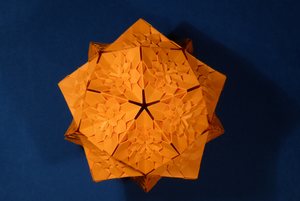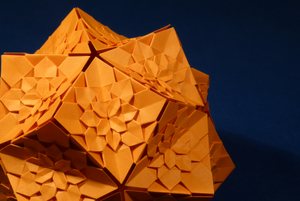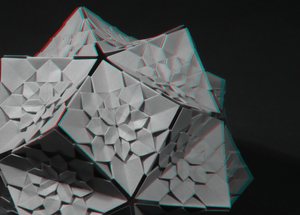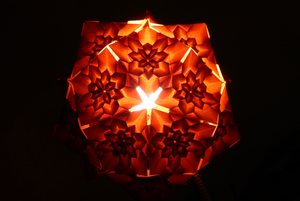Hydrangea Icosahedron




After I made a Hydrangea Cube, Hydrangea Icosahedron was the next logical step. Just as in the cube, the Hydrangea Tessellation by Shuzo Fujimoto is used as a modular unit. The method of modifying and connecting individual elements was first published by Meenakshi Mukerji but at a later time I came up with the same design independently.
The modified tessellation unit has properties very similar to the Sonobe unit, so other, larger assemblies that can be made with Sonobe units can be made with Hydrangeas as well.
The head-on view nicely shows the pentagonal symmetry of the spiked icosahedron while the close-up shows details of the tessellation. As for the back-lit picture, I took it when the model was not complete yet by placing a lamp inside it to generate a strong back-light.
Comments